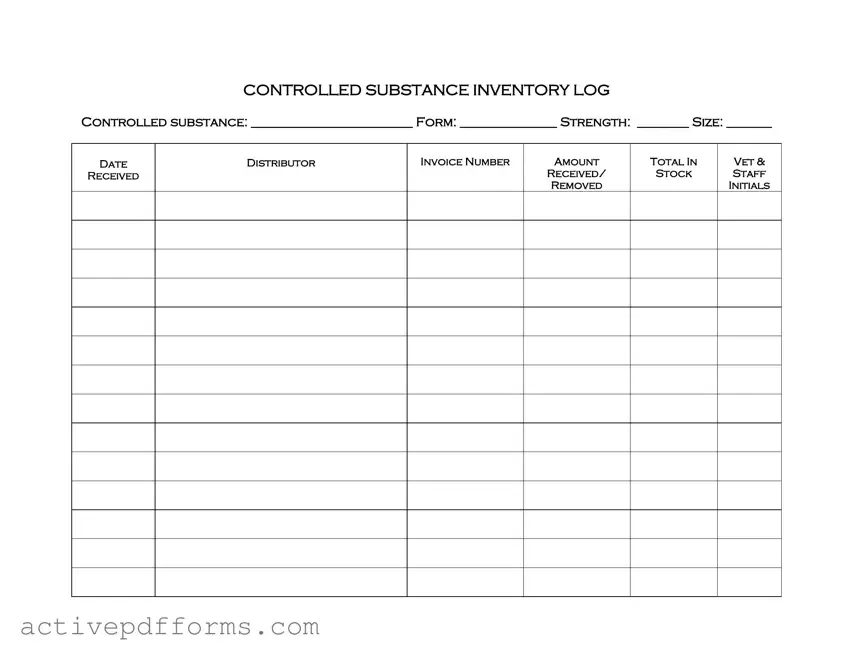Free Controlled Drug Log PDF Template
A Controlled Drug Log form is an essential tool used to meticulously track the inventory of controlled substances within a facility. This form records essential details such as the type of controlled substance, its form, strength, and size alongside the date received, the distributor, invoice number, amount received, total in stock, and details of removal including staff initials. It plays a crucial role in ensuring compliance with regulations and maintaining an accurate record for audit purposes.
Edit Controlled Drug Log Now
